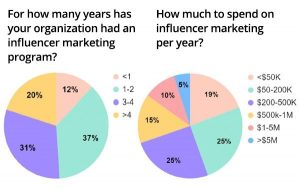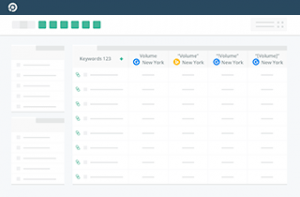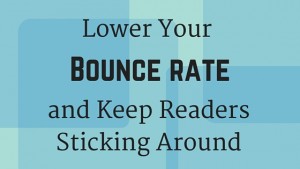
Whether you need a new logo, website, video, marketing campaign, or eBook created for your business, the key to making the project a success starts with having a thorough and well-thought-out creative brief.
A creative brief is a document that explains the ins and outs of a project for the creative team, agency, or designer who’ll be working on it. Think of it as a blueprint for your project that not only helps the creative team but also will help you as you shape the overall strategy and goals for the project.
While it takes a bit of time to develop a solid creative brief, it’ll be well worth it to help ensure the deliverables you receive align with your expectations and business needs. Not to mention, it’ll also make the whole process smoother and more efficient, and most likely save you money in the long run. So, before you start working on the creative brief, take time to carefully think through your project and objectives.
Unfortunately, thorough creative briefs aren’t typically the norm. In a survey of more than 1,200 C-level ad agency executives, 53 percent of respondents said the creative briefs they receive lack focus, and 27 percent reported that the briefs they receive are incomplete and inconsistent. No one reported that the briefs were complete and focused all of the time.
As one ad agency exec and former brand manager says in his blog post, “And just like a compass that doesn’t always point north, a creative brief that is not tightly focused on a single-minded idea will not get you to on-target creative.”
Take the time to provide all of the pertinent details and strategic thinking, and you’ll enable the creative team to deliver great work.
When it comes to format, the brief can be created in a variety of file types: Word document, PowerPoint presentation, PDF, Google document, or Google presentation. While you can use the same template each time, you’ll want to create a new brief for every project, and make sure you’ve covered and thought through all of the critical details each time.
While it’s a good idea to go into detail, keep in mind that you don’t want to go into so much detail that your brief becomes overwhelming. Make it informative but digestible.
It’s also important to note that a project shouldn’t start until both you and the creative team have discussed and reached an understanding on everything outlined in the brief. It’s a good idea to have a kickoff meeting to go over the brief and discuss any questions or issues.
Now let’s dive into a few key pieces of information your creative brief needs to include and questions it should answer.
- Describe your company
Provide context and background information on your company to help the designer or creative team get a better understanding of your business. Who are you and what services and/or products do you offer? Include links to your website and any other background material that might be helpful.
- Summarize the project
What is the project? And why do you need it? Do you need a corporate identity kit for your new company? Are you refreshing your company’s Facebook and Twitter pages for a new season? Describe what the project is, what it entails, and why you’re doing it.
- Explain your objectives
This is probably the most important part of the brief, and it’s essential that you think through your strategy and objectives completely before you get the project underway. Why do you need this project? What are you hoping to achieve with it? What are your goals? Is there a problem you’re trying to solve? How will you measure success? For example, if you’re developing an eBook, you might measure success by the number of downloads. These details will help the designer understand your goals and come up with solutions that address them.
- Define your target audience
Who’s your customer? Who are you trying to reach with this project or campaign? Share demographic information about who they are and any behavioral insights you may have on them.
- Outline the deliverables you need
Do you need a one-page brochure? A batch of 10 banner ads? A logo for print, just for the web, or for both? Be sure to include the file formats you need (i.e., JPG, PNG, PSD), size information (i.e., 300×250 pixels), and any other important details needed to deliver the right assets.
- Identify your competition
Who are your competitors? You may want to include an overview of the competitive landscape and any trends or market conditions impacting your industry. For this project, what are your competitors doing as a point of comparison and as a point of differentiation? For example, if you’re refreshing your logo, what types of logos and colors do your competitors use? These details can greatly help inform the direction the designer will go in (they’ll do additional research as well). You can also include a few examples of designs you like or don’t like.
- Include details on the tone, message, and style
The style and tone should be consistent with your brand and will also hinge on what the project is, what you’re trying to achieve, and what action you want your customers to take. To help inform the messaging and ensure it aligns with your objectives, be sure to include your strategic positioning and the key messages that need to be addressed. For example, if you’re creating a landing page for a contest, you’d probably want the messaging and design to be lively and fun to inspire people to enter. If you’re developing an annual report, you’d most likely want something that looks and sounds more formal and professional to instill trust and confidence. If you have a brand style guide or examples of past campaigns or related projects, be sure to share them with your designer. And also provide any other factors or requirements that might affect the creative direction.
- Provide the timing
If you have a timeline in mind for your project, include it in the brief. During your kickoff meeting or initial conversations with your designer, make sure to discuss the timeline and agree upon a completion date. It’s also a good idea to talk about the overall creative process and discuss if edits and how many rounds of them are possible and whether or not they’re included if it’s a fixed-price contract.
- Specify your budget
If you have a set budget for the project (which is often the case), include it in the brief and discuss it with your designer. If the designer’s estimate exceeds your budget, talk it over and agree upon realistic expectations, deliverables, and project costs before getting started.
- List the key stakeholders
If other people on your team or within your organization need to be included in the review process, provide their contact information. You can also include how you’d like to receive deliverables and provide feedback.
By thinking through and elaborating on these 10 key aspects of your business and project, you’ll be able to produce a creative brief that’s not only thorough but also effective. With a solid creative brief in hand, you’ll help the designer deliver great results and ensure your project delivers the results your business needs.
Business & Finance Articles on Business 2 Community(127)








